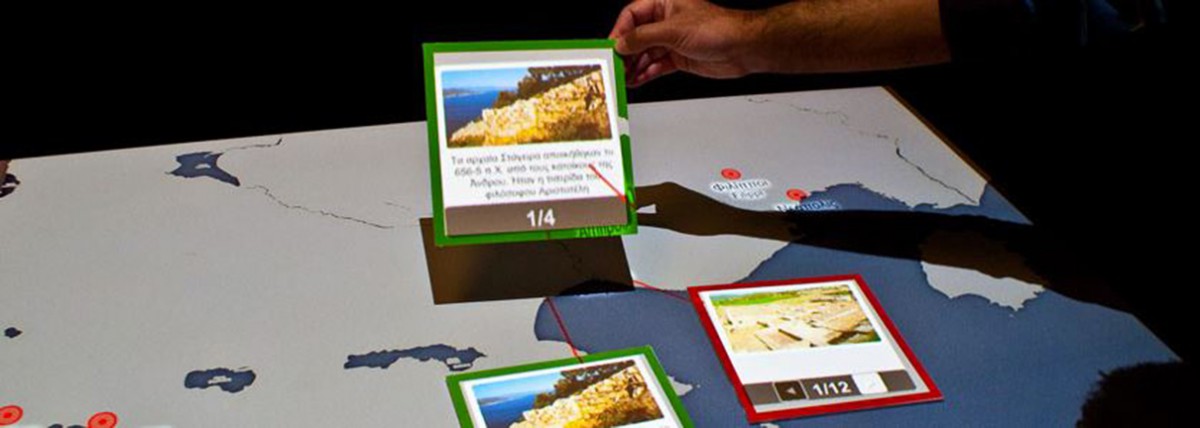
Augmenting Physical Surfaces with Location-Aware Digital Information
An augmented-reality approach for supplementing physical surfaces with digital information, through the use of pieces of plain paper that act as personal, location-aware, interactive screens. The system comprises a surface, a projector, an RGB camera, a PC and speakers. Additionally, rectangular pieces of plain white cardboard of various sizes are used. Cardboard pieces are surrounded by a colored frame. A computer vision system is used to track the position and pose of the paper surfaces, as well as the activation of any related interactive areas by the users’ fingers. This information is passed through a custom middleware layer to an application developed in Actionscript 3.0 using Adobe Flash, which implements the system’s user interface.
Up to now, the system has been instantiated and tested in three setups: (i) a map of Macedonia, Greece, including ancient Greek cities with archaeological interest; (ii) a glass case containing a scale model and (iii) a part of Rigas Velestinlis’ Charta. The first two systems are currently installed and available to the general public at the Archaeological Museum of Thessaloniki, Greece, as part of a permanent exhibition of interactive systems.